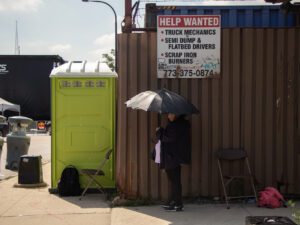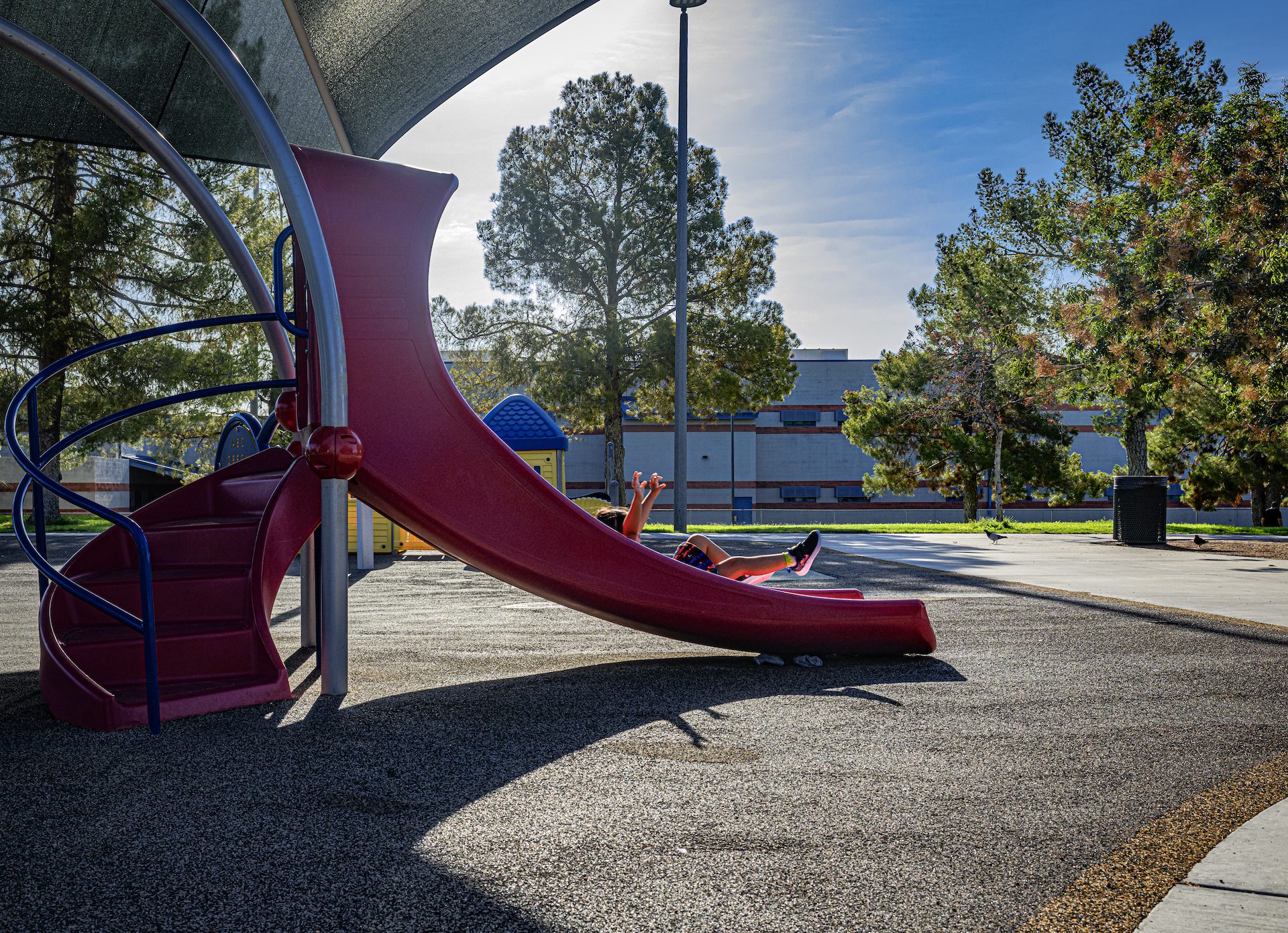 Kevin Hurley para Inside Climate News
Kevin Hurley para Inside Climate NewsEn Arizona, los investigadores están estudiando parques infantiles en los que los aparatos se calientan tanto que pueden quemar la piel de los niños. A medida que el calor empeora en todo el país, Chicago y otras comunidades tendrán que tomar nota.
Este reportaje forma parte de un proyecto de información en colaboración dirigido por la Instituto de Noticias sobre las Organizaciones sin Ánimo de Lucro e incluye Revista Borderless, Cicero Independiente y Noticias sobre el clima. Contó con el apoyo del Fundación Field e INN.
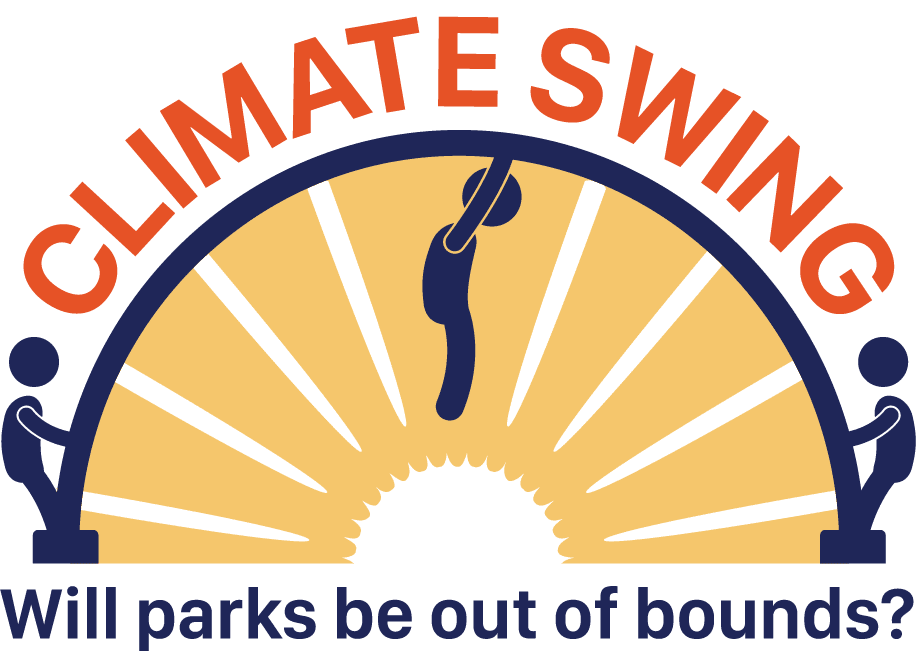
TEMPE, Arizona - Eran poco antes de las 8 de la mañana, pero la temperatura ya rozaba los 100 grados cuando los miembros del laboratorio SHaDe de la Universidad Estatal de Arizona cargaron con una escalera y su equipo de medición del calor hasta el parque Kiwanis.
No había nadie más en el parque infantil, salvo una niña que bajaba por el tobogán y su madre. Al otro lado de la calle, en la escuela primaria local, se oía al director dar su discurso matutino por megafonía: "Otro aviso de calor para hoy", advirtió. "Ayer vi a un grupo de chicas conversando agradablemente a la sombra y os animo a todos a hacer lo mismo".
En la zona metropolitana más calurosa del país, este verano se ha batido el récord de Más de 100 días con temperaturas superiores a 100 gradosEl calor extremo es un peligro cada vez mayor para los niños que juegan al aire libre. Los investigadores han descubierto que el caucho de los toboganes, las barandillas metálicas de los parques infantiles e incluso las losetas de caucho que protegen a los niños cuando se caen pueden superar los 150 grados cuando están expuestos directamente a la luz solar en Arizona. Tres segundos de contacto es todo lo que se necesita para quemar la piel de un niño.
Noticias que ponen el poder en el punto de mira y a las comunidades en el centro.
Suscríbase a nuestro boletín gratuito y reciba actualizaciones dos veces por semana.
Es un problema en todo el país, ya que el cambio climático ha provocado 14 récords mensuales consecutivos de temperatura globalEn agosto, ciudades del Medio Oeste como Chicago sufrieron una ola de calor sin precedentes. Pero es especialmente pronunciada en lugares como el área metropolitana de Phoenix, que incluye Tempe. El calor es un hecho constante de la vida aquí, y un anticipo del futuro de otras comunidades. Ya hay ciudades de Nueva York a Los Angeles están replanteándose el diseño de los parques infantiles.
"Los parques infantiles están realmente en el centro del impacto del calor extremo", afirma Ariane Middel, directora del laboratorio SHaDe y profesora asociada dedicada a la intersección del calor extremo y los climas urbanos, incluidos los parques infantiles de la zona de Phoenix.
"A los niños no les importa el sol, la sombra o el calor, sólo quieren jugar, así que no prestan atención", explica. "Pero el segundo problema que tenemos con los parques infantiles aquí en Phoenix, donde no hay sombra, son las temperaturas de la superficie. Como los niños suelen usar las manos desnudas, van descalzos, y estas superficies de los parques infantiles se calientan muchísimo."
Según Middel, la sombra puede marcar la diferencia. Ya sea con árboles o con grandes estructuras de sombra, como velas de sombra y toldos permanentes, los juegos infantiles protegidos del sol se mantienen a la misma temperatura que el aire que los rodea.
En todo el país, la sombra no se distribuye por igual. Las comunidades más ricas suelen tener más, según los investigadores. Las soluciones para combatir el calor también varían de un país a otro. En Chicago, por ejemplo, la sombra es útil, pero no ayudaría a hacer frente a la humedad del verano en la ciudad, dijo Middel, lo que significa que no hay un enfoque único para hacer frente a los impactos del cambio climático en los parques infantiles.
Una mejor comprensión de la sombra podría tener grandes efectos en cadena. Desde hace años, el parque infantil de Kiwanis Park está cubierto por una vela de sombra y rodeado de árboles, lo que lo convierte en un lugar ideal para estudiar cómo la sombra puede influir en la interacción de las personas con su entorno.
Cómo miden los investigadores el impacto de la sombra en el calor extremo
En Kiwanis Park, el laboratorio ha instalado tres estaciones meteorológicas en un parque infantil. Llamadas "MaRTinies" y pronunciadas como la bebida, deben su nombre al dispositivo móvil MaRTY del laboratorio, clave en su investigación sobre la temperatura radiante media. Este número indica cómo la radiación solar y las superficies calientes que rodean a una persona influyen en el calor que siente en ese momento.
MaRTY cuesta unos $20.000 y tiene que desplazarse en un gran carro, mientras que las MaRTinies, cajas blancas conectadas a minúsculos paneles solares, tienen un tamaño y un coste muy inferiores. Miden la temperatura, la humedad y la temperatura radiante media y, con una cámara, cuentan a la gente, mostrando cómo cambia el uso del patio según el tiempo y las condiciones de sombra. Cada minuto, los datos se cargan en los servidores del laboratorio.
"Podemos analizar los datos en función de las estaciones, las temperaturas, los fines de semana, los días laborables y las horas del día, y ver cómo cambia el uso del espacio", explica Middel, lo que permite a la ciudad "saber cómo se utilizan sus parques infantiles" en función del tiempo y la sombra que ofrecen.
El seguimiento comenzó en abril. Los investigadores necesitan más meses de datos antes de poder emitir conclusiones, entre ellas cómo cambia el uso que la gente hace del parque a medida que baja la temperatura.
En el parque infantil, Pouya Shaeri escaló una escalera mientras Ameya Ajitraj Shahane le entregaba herramientas y equipos, un proceso que los dos estudiantes de posgrado del laboratorio han realizado durante todo el verano para mantener las miniestaciones meteorológicas funcionando sin problemas. Como es lógico, las duras temperaturas del Valle del Sol pueden afectar a las MRTinies cuando miden el calor, agotando sus baterías y requiriendo revisiones frecuentes.
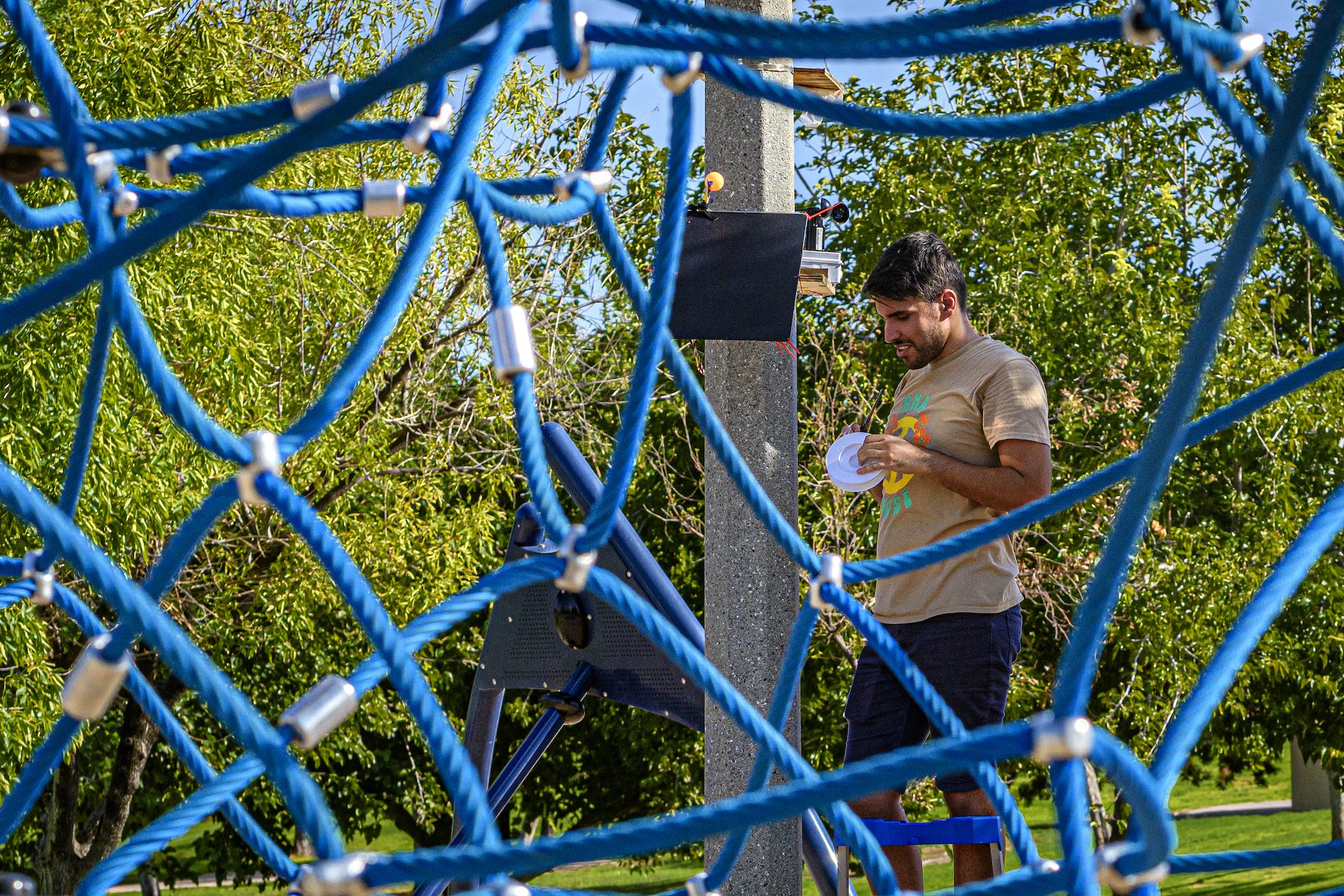
Lo que el laboratorio estudia -cómo el calor extremo y los niveles de sombra afectan a las interacciones de las personas con su entorno- repercute a su vez en el equipo para medirlo.
"El objetivo de este estudio es causar el problema", dijo Shaeri.
Para Shaeri y Shahane, el calor y la sombra son temas de investigación visibles. Las conversaciones se trasladan rápidamente a la sombra. Todo lo que está expuesto al sol tiende a calentarse y estropearse. Son testigos de primera mano de la poca gente que acude al parque durante los meses de verano.
Mientras los dos estudiantes trabajaban, Luz María observaba cómo su hija Layla jugaba en el patio cubierto de sombra. Si la vela de sombra no estuviera instalada aquí, no vendrían, dijo Luz, y está agradecida de vivir en un barrio que tiene una.
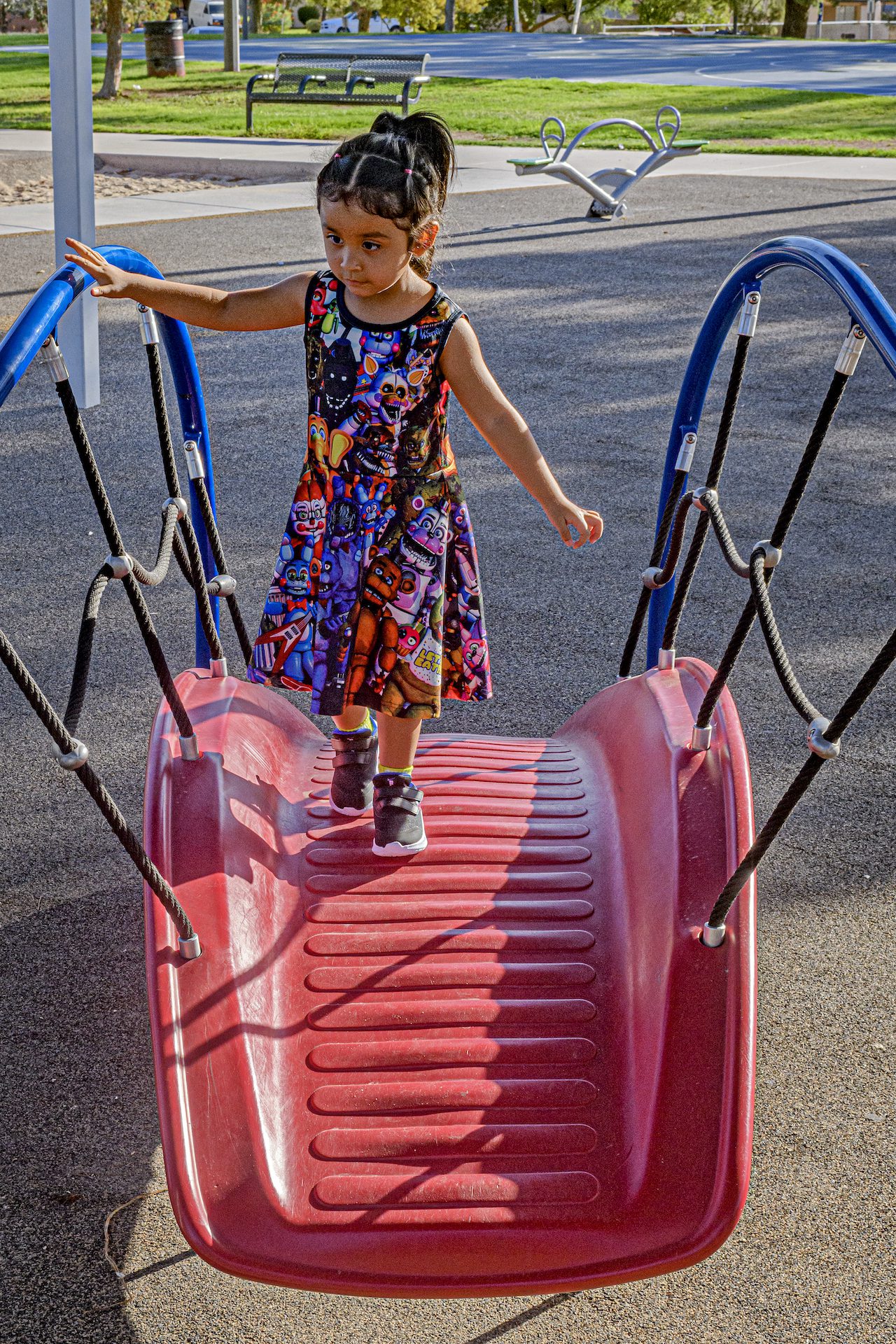
Incluso con él, intentan salir lo antes posible para combatir el calor, aunque puede ser difícil de encajar en el horario familiar. Si hace demasiado calor, sus opciones se limitan a los lugares cerrados con aire acondicionado. "Quizá la biblioteca. Un museo. Simplemente pasear por el centro comercial", dice.
Pero para los niños, el juego al aire libre no tiene sustituto. "Intentas que estén activos y que quemen esa energía", dice Maria.
La sombra, clave para una "existencia sana y vibrante" en el desierto
En Tempe, la ciudad mantiene una cobertura de sombra de alrededor del 25 por ciento en todos sus parques, dijo Richard Adkins, guardabosques urbano de la ciudad encargado de cumplir con el objetivo de Tempe de tener ese nivel de cobertura de sombra en toda la ciudad para el año 2040. Los parques y las zonas de recreo han sido uno de los principales focos de expansión de la sombra, ya que esos lugares son propiedad de la ciudad, por lo que es más fácil plantar allí que en residencias privadas y empresas.
El trabajo no es tan sencillo como plantar árboles y ya está, dice. Hay que mantener las plantas o morirán. La población arbórea actual de la ciudad está empezando a envejecer, y sus grandes pinos no son capaces de sobrevivir al creciente calor de la ciudad. Y los árboles no pueden plantarse en cualquier sitio: Los planificadores tienen que pensar en el uso de la zona y cómo encaja la sombra en ella.
"Tengo muchos campos de fútbol en el complejo deportivo [donde] podría plantar muchos miles de árboles", dijo Adkins. "Pero, de nuevo, eso va en contra de jugar al fútbol".
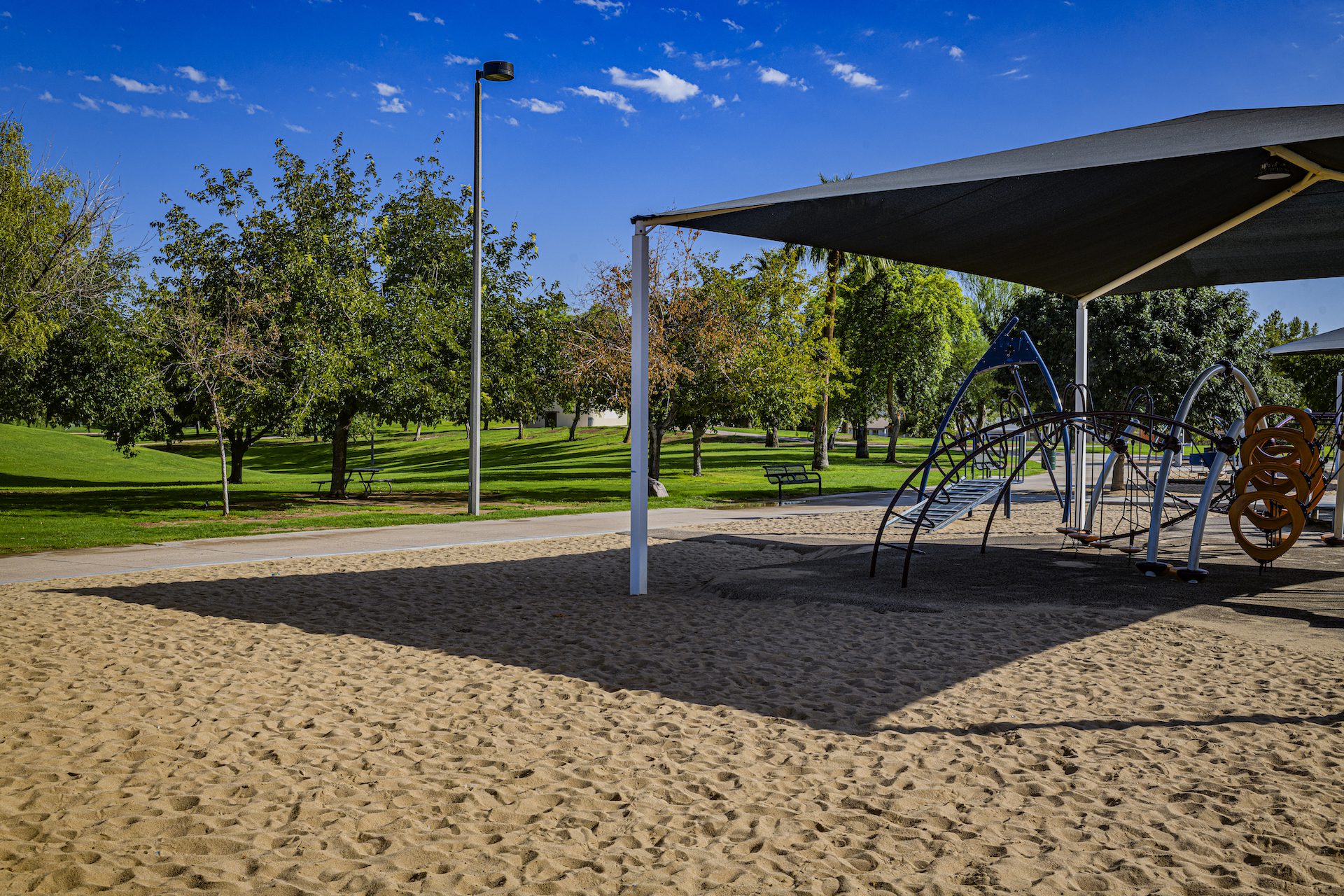
Otra consideración: Algunos árboles se despojan de sus hojas durante los meses de invierno, pero los materiales como los que se encuentran en los parques infantiles pueden calentarse rápidamente incluso cuando hace más frío.
Adkins ha dado prioridad a la plantación de árboles más pequeños adaptados al suroeste desértico y a la implantación de más sombra artificial, como las velas de sombra de muchos parques infantiles de la ciudad.
Allí, el centro de atención suele ser una estructura de sombra que cubre el parque infantil y su equipamiento, ayudando a mantenerlo todo fresco y también a preservar los materiales. Los árboles plantados alrededor cubren los caminos y los bancos donde suelen sentarse los padres. Cada día está en contacto con investigadores del calor y la sombra como Middel para encontrar nuevas soluciones a los problemas.
El calor extremo está aquí para quedarse, dijo Adkins, y la sombra, tanto de los árboles como de los diseños de ingeniería, será vital para mitigarlo.
"Es la única forma de que tengamos una existencia sana y vibrante aquí en el suroeste desértico", afirmó.
Esta historia fue producida por Dentro de Climate News.
